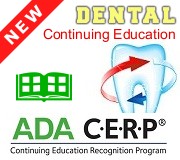Dental News, Dental Health Imaging Blog
Radiology and Dental Imaging Blog - Editor's Notes
Cad/Cam Usage in The Dental Practice Setting Became A Reality
- Font size: Larger Smaller
- Hits: 1117
- 0 Comments
- Subscribe to this entry
- Bookmark
CAD/CAM use in dentistry has increased dramatically in the last two decades. The accuracy of the marginal fit of restorations made using CAD/CAM systems has been shown to be excellent even though there may be differences based on the technique, ceramic type, and the interaction of the two. For example, in a recent study by Hamza and colleagues (J Prosthet Dent. 2013 Feb;109(2):83-7) it was shown that differences existed between the Cerec inLab and Kavo Everest system with respect to the marginal fit of two types of zirconia-based and lithium disilicate crowns. Since marginal fit is an important component of restoration longevity, it is important to know which system or systems provide the best marginal integrity (or if there is no significant difference between systems). Additional research should help to clarify this issue.
In relation to longevity, there has been concern about the use of CAD/CAM all-ceramic partial-coverage restoration systems and the long term survival of their fabricated restorations. Now a new seven year prospective split-mouth study published in the International Journal of Prosthodontics (Guess PC, et al. Int J Prosthodont. 2013 Jan-Feb;26(1):21-5) provides results that suggest that these fabricated all-ceramic partial-coverage posterior restorations, regardless of the type and system, are a reliable treatment option for restoring the posterior teeth (although all such restorations appear to be subject to deterioration over time).
An excellent review of the performance of dental ceramics fabricated by CAD/CAM systems is provided by E.D. Rekow and colleagues in their article published in J Dent Res, 2011 (August; 90(8):937). As the authors point out: “Challenges remain in both understanding and improving the clinical performance of all-ceramic restorations. These include improved consistency and breadth of information about factors in clinical studies, definition of failures, and laboratory testing procedures’. Much remains to be done in terms of providing the evidence base necessary to fully support all CAD/CAM restorations and CAD/CAM systems. But this much is certain: CAD/CAM technology continues to revolutionize the dental profession.
Dr Jeff Burgess
Comments
-
Please login first in order for you to submit comments






